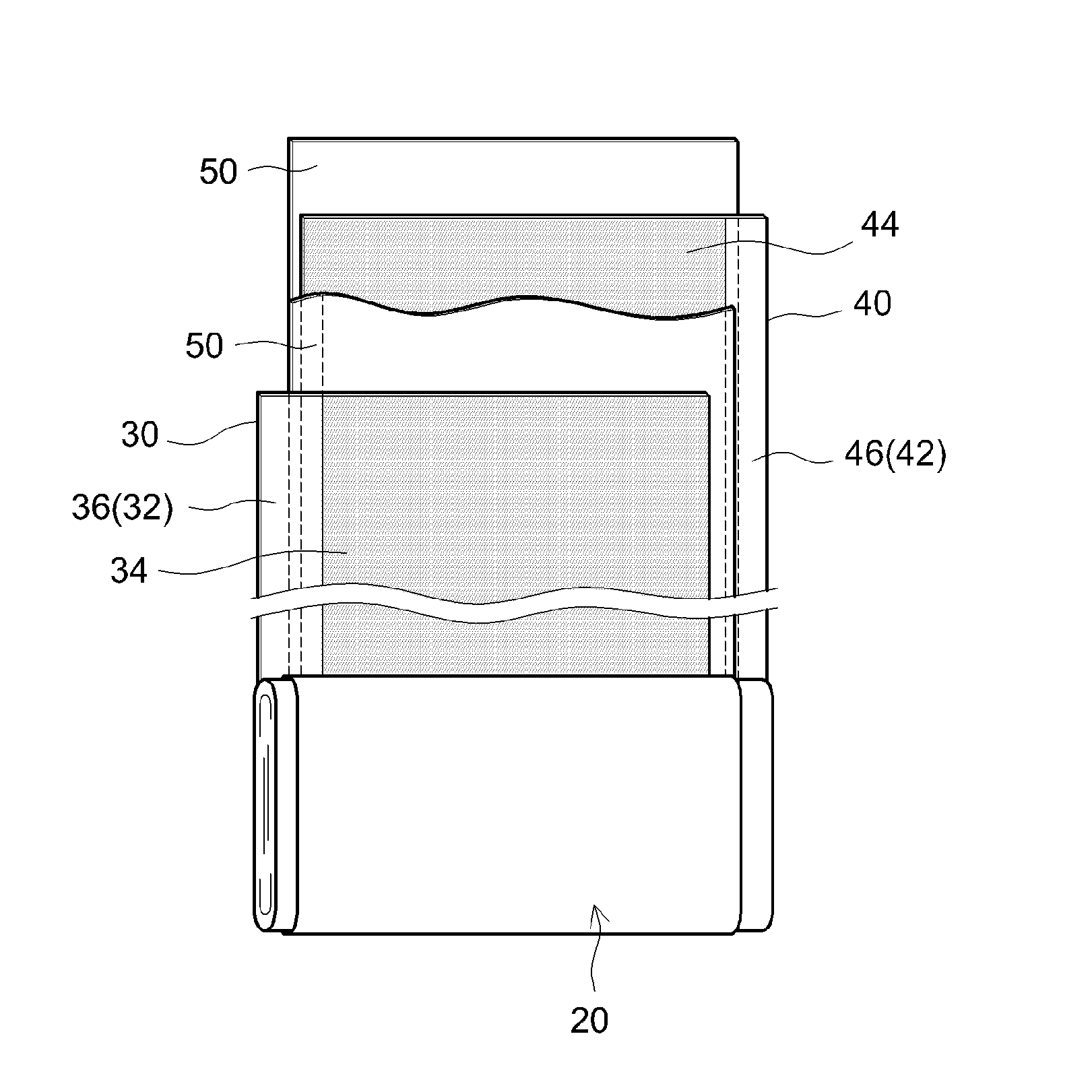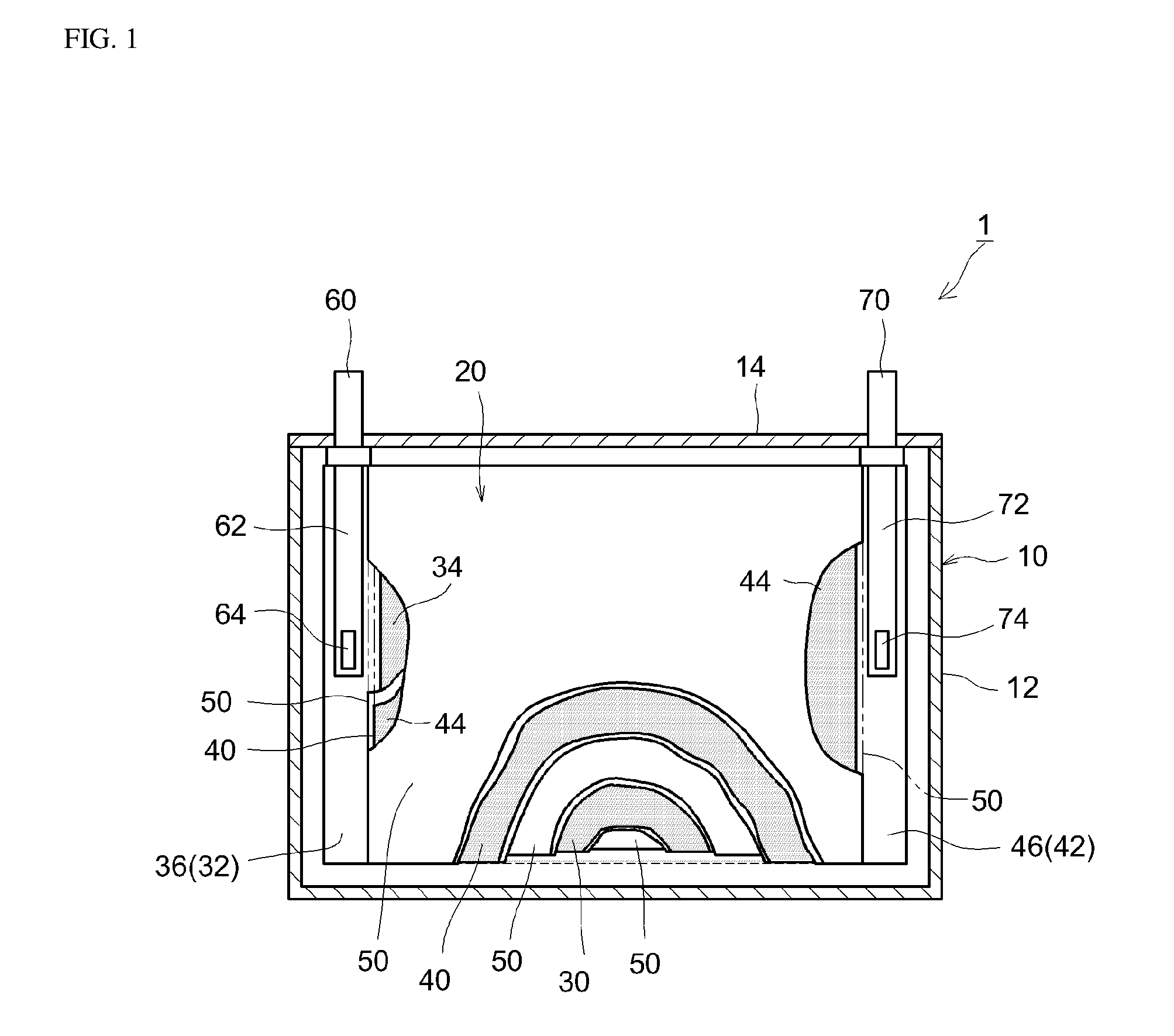Non-aqueous electrolyte secondary battery
a secondary battery, non-aqueous electrolyte technology, applied in the direction of batteries, wound/folded electrode electrodes, sustainable manufacturing/processing, etc., can solve the problems of cycle characteristics deterioration and increase resistance, and achieve the effect of high rate and high ra
- Summary
- Abstract
- Description
- Claims
- Application Information
AI Technical Summary
Benefits of technology
Problems solved by technology
Method used
Image
Examples
embodiment 1
Example 1
Construction of Test Lithium Ion Battery
[0072]A lithium-nickel-manganese-cobalt composite oxide having a composition represented by the general formula Li1.14(Ni1 / 3Co1 / 3Mn1 / 3)O2 (NCM, average particle diameter 6 μm) was used as a positive electrode active material. Acetylene black (AB) was used as an electrically conductive material, and poly(vinylidene fluoride) (PVDF) was used as a binder. In addition, a positive electrode active material layer-forming slurry was prepared by weighing out the positive electrode active material, the electrically conductive material and the binder at a NCM:AB:PVDF mass ratio of 93:4:3, adding N-methylpyrrolidone (NMP) so that the solid content concentration (NV) was approximately 50 mass %, and then kneading the obtained mixture in a planetary mixer. Next, a positive electrode sheet was prepared by coating the positive electrode active material layer-forming slurry on both surfaces of a long aluminum foil having a thickness of 15 μm as a pos...
example 2
[0079]A separator having the second resin layer on both surfaces of the separator-based material was prepared by coating the second resin slurry on both surfaces of the separator base used in Example 1. A lithium ion battery of Example 3 was constructed using this separator, with other conditions being similar to those used in Example 1.
example 3
[0080]A lithium ion battery of Example 3 was constructed by reversing the front and back of the separator used in Example 1, with other conditions being similar to those used in Example 1. That is, the battery was constructed by preparing the separator in such a way that the surface of the separator on which the second resin layer was formed faced the positive electrode and the surface of the separator on which the first resin layer was formed faced the negative electrode.
PUM
| Property | Measurement | Unit |
|---|---|---|
| Gurley value | aaaaa | aaaaa |
| Gurley value | aaaaa | aaaaa |
| thickness | aaaaa | aaaaa |
Abstract
Description
Claims
Application Information
 Login to View More
Login to View More - R&D
- Intellectual Property
- Life Sciences
- Materials
- Tech Scout
- Unparalleled Data Quality
- Higher Quality Content
- 60% Fewer Hallucinations
Browse by: Latest US Patents, China's latest patents, Technical Efficacy Thesaurus, Application Domain, Technology Topic, Popular Technical Reports.
© 2025 PatSnap. All rights reserved.Legal|Privacy policy|Modern Slavery Act Transparency Statement|Sitemap|About US| Contact US: help@patsnap.com



